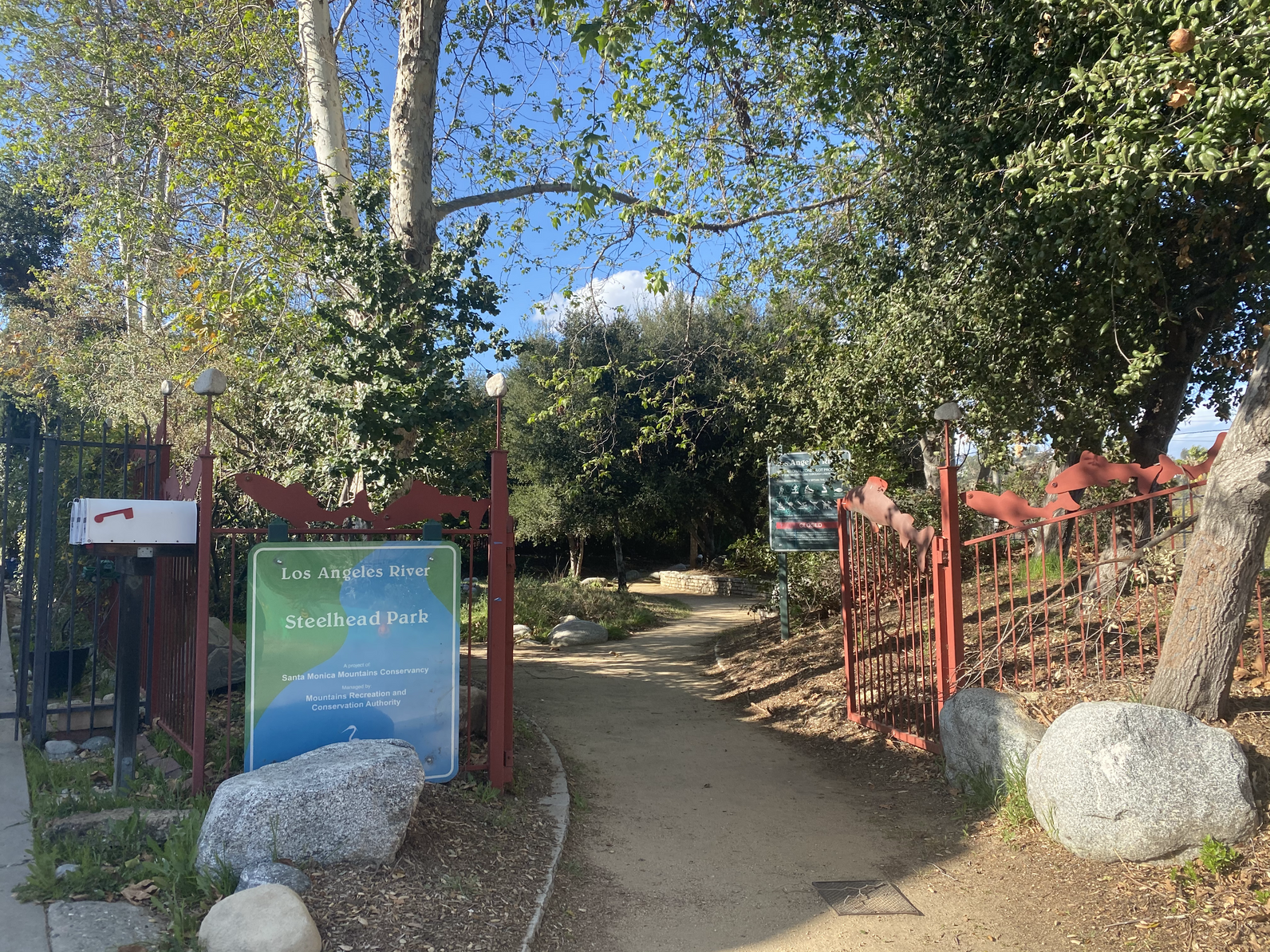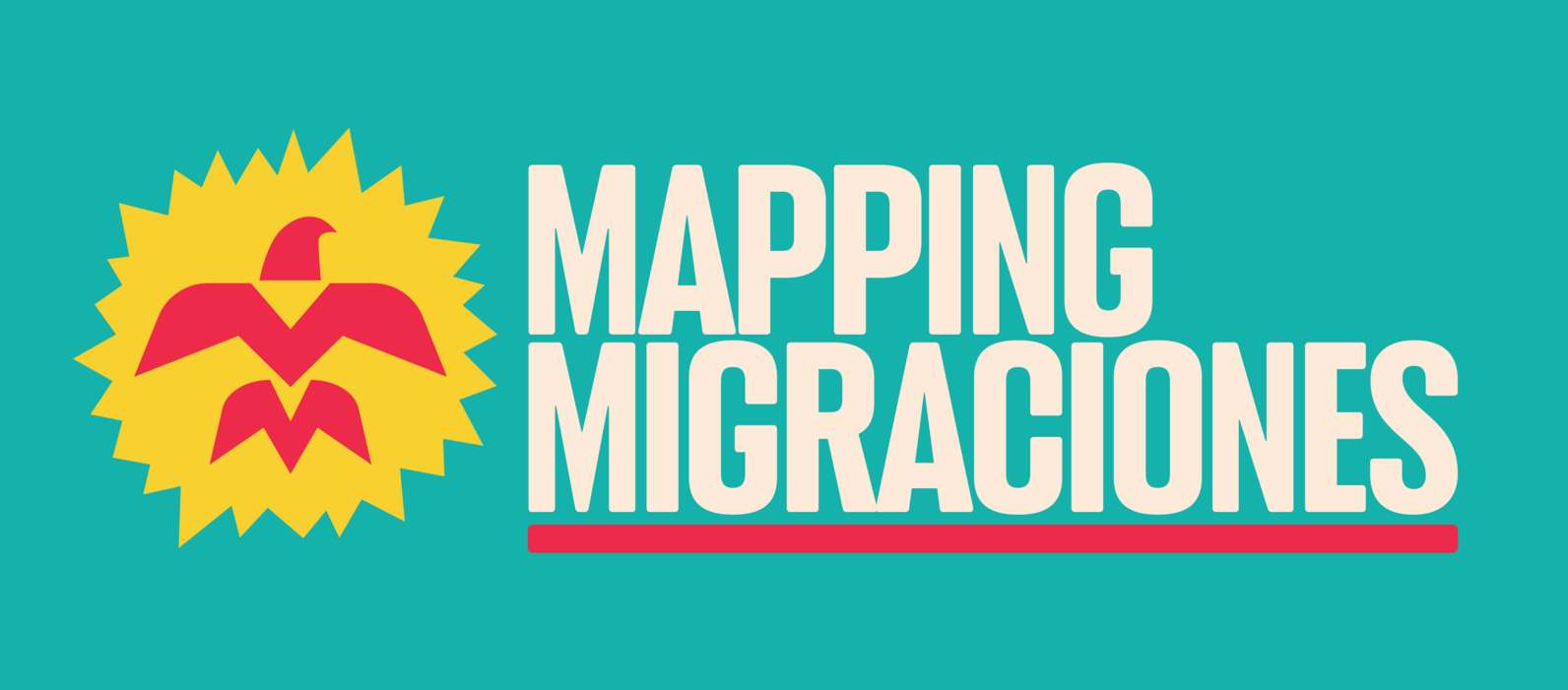Let’s take a quick look at some of the summer residents that you might be able to spot around the LA area now and throughout the summer months! Featuring the Lazuli Bunting, Ash-throated Flycatcher, Black-headed Grosbeak, and Hooded Oriole.
Over the course of the past year, Audubon Center at Debs Park Program Coordinator, Tania Romero, has been supporting with ongoing research and surveying taking place at the Salton Sea, one of California’s essential IBAs (Important Bird Areas). See above for some of her recent photographs from the field!
For those unfamiliar with the Salton Sea, it is not technically a “sea” as its name implies. With an estimated surface area of 320 square miles, the Salton Sea is by far California’s largest lake, as well as a vital stop for migrating birds along the Pacific Flyway. Threatened by contaminated runoff and reduced inflow from changing water-usage patterns, the Sea is degrading rapidly, exposing airborne dust from the dry lakebed that endangers the health of the 650,000 residents who live in the immediate area. The Sea serves as a critical site to engage in holistic policy and program development that prioritizes the health and well-being of both people and wildlife.
Audubon CA began conducting monthly point count surveys at the Sea back in 2016. These monthly surveys are a method to monitor bird populations, specifically shorebirds and waterbirds. Unfortunately, the data confirms some extremely concerning trends. With the shrinkage of the sea, there has been an increase in salinity levels and a sharp decline in fish. As a result, piscivores (or birds that eat fish) such as the American White Pelican and Double-crested Cormorant are also declining in population. For more information on these findings, check out the 2019 Salton Sea Conservation Report here.
Although the future of the Sea remains uncertain, hope is on the horizon. In January 2021, thanks to the support of Governor Newsom’s administration and the local leadership of Assemblymember Eduardo Garcia, the California Salton Sea Management Program began construction on a project to restore bird and fish habitat at the southern end of the Salton Sea. View the full press release here. The Species Conservation Habitat Project (SCH) will reduce wind-borne dust pollution on nearly 4,000 acres to the east and west of the New River delta, lessening dangerous dust pollution affecting nearby communities, while also creating habitat for birds and serving as a water-management pond for future projects in the area.
This work is long overdue and it is essential that we continue this momentum to ensure a healthier future for the Salton Sea, its surrounding communities, and our shorebird populations here in California.
For more information on the Salton Sea, visit https://ca.audubon.org/salton-sea
Although we've just reached the sobering one-year mark of Covid-19 restrictions, working from home, and running almost exclusively virtual programming, the Debs Park team remains motivated, optimistic, and present. Some of the things that have been bringing us joy lately include the beginning of spring migration, a few much needed rainy days, and construction (finally) beginning on our roofs and solar power system!
If everything goes according to plan, we hope to reopen the Center in some capacity by early Summer 2021. Until then we will continue with virtual programming as we focus on prepping the building and grounds for community use, so that we can be ready to go as soon as it's safe to welcome everyone back!
Please contact debspark@audubon.org with any questions or concerns.

This past week we've had the pleasure of resuming our habitat enhancement work at Steelhead Park along the LA River! Although we haven't been able to safely resume our community volunteer events at the park, we've had the opportunity to work with youth from the Los Angeles Conservation Corps to help get the job done in the meantime!
For those unfamiliar with Steelhead Park, it's a small pocket park located along the Los Angeles River Greenway Trail in the Elysian Valley neighborhood. It's just off of Oros Street, which was actually the first "green street" in Los Angeles! The residential street incorporates innovative stormwater capture and filtration systems, and the design was the first of it's kind when constructed in 2006-2007. So, our work at Steelhead Park builds on an impressive legacy of environmental stewardship at this site.
Through our habitat enhancement work, we aim to build sustainable and bird-friendly communities through the planting of native plants, removal of invasive species, and ongoing community-based maintenance and stewardship of the land.
This past week we planted 119 native plants in total, including yarrow, hummingbird sage, native grasses, toyon, golden currant, CA wild rose, CA bush sunflower, and more! All plants were grown onsite at the Center in the Los Nogales nursery. We were able to get the plants in the ground just before a few days of much needed rain, so we're extremely hopeful about their rate of survival.
In addition to planting, the crew worked on invasive species removal as well as general park cleaning and upkeep, and they will be returning to the park on a regular basis to continue this work.
So next time you're in the Elysian Valley area or taking a ride along the bike trail, stop by Steelhead Park and check out the new plants! On a nice day, it's a beautiful place to sit and relax. Keep your eye out for thrushes, warblers, finches and more! The frequent bird sightings are a wonderful reminder of why this habitat enhancement work is so important.

One of the most common questions we receive is how to distinguish a Raven from a Crow. Both birds are large, black, loud, extremely smart, and they have similar body shapes. Both birds can be found in California year-round. So, how on earth do you tell these two birds apart??
Don’t worry, we got you covered - our latest Backyard Birding Tips video breaks down exactly how to identify these two common backyard birds. It takes a little bit of practice, but we’re confident you’ll be able to tell whether that big black bird you just saw was a Raven or a Crow in no time!

Birds have no borders and migrate thousands of miles every year.
The project aims to produce an interactive map that uses migratory bird data and stories from people like you to give us a full picture of how birds and people are connected through geography and culture. Check in throughout the year and watch the map grow to include more birds, migration patterns, and stories.
Mapping Migraciones grew from an activity that took place at our Pachanga de las Americas, all the way back in 2019 when we were able to host in-person community events. With Covid-19 limiting our ability to connect with others in person, transitioning the map to a virtual platform seemed like a great way to stay connected through the magic of migration and storytelling. Now that the project is being promoted at a national level, we can provide an even more dynamic picture of migration across the Americas!
A huge piece of this project involves gathering stories from community members. Does your family have a migration story? Are there any particular birds that resonate with you and your journey? We want to hear from you!
Later on, you’ll be able to check out the interactive map to see how your route matches to a migratory bird.
Want a deeper dive? Panels and discussions throughout the year will give you an opportunity to learn more about the joy of migration. Check out the landing page for more info on upcoming webinars and to re-watch previous ones!
This month's words from our Center Director, Marcos Trinidad!
We hope this update finds you and your loved ones safe & well! Although last year was certainly difficult, to say the least, the Debs Park team remains optimistic and is looking forward to another year full of restoration, connection, partnership, and community - one in which we'll hopefully be able to safely gather again in person! In the meantime, the Center remains closed to the public and the team continues to work primarily from home. We have some exciting programs and events in the works, including a native plant grant program, virtual education programs, and an upcoming community happy hour!

The Debs Park trails remain open, along with the pedestrian gate off of Griffin Ave.
As always, please contact us at debspark@audubon.org with any questions, comments, or concerns.
On January 13th, Los Angeles County released the 2020 LA River Master Plan, which is a comprehensive update to the original LA River Master Plan released in 1996. The new plan takes a more holistic "watershed and community approach" within which site specific, culturally relevant, and multi-benefit improvement projects are prioritized. The 2020 LA River Master Plan "includes over two decades of planning and implementation efforts for the LA River, including efforts by LA County (1996), the City of LA (2007), the LA River Ecosystem Restoration Feasibility Study (also known as the ARBOR Study, 2015), the Lower LA River Working Group (2018), and the Upper LA River and Tributaries Working Group (2019)."
The County wants to hear from you! Public comment can be made now until March 14th via the LA River Master Plan website. This is a great opportunity to share your thoughts and have a direct impact on the future of the River and its surrounding communities.
Although often neglected and undervalued, the LA River is an incredibly valuable resource in terms of connecting people with the land and each other, building sustainable habitat for birds and other wildlife, investing in local communities, and recognizing the Indigenous communities who were the original stewards of this land, and who continue to steward the land today. Now is the time to play a role in building a sustainable future for the LA River - one in which diversity, equity, and ecological harmony is prioritized.
The LA County Board of Directors is expected to review the Final Draft of the 2020 Plan as early as this summer.
El documento también está disponible para su revisión en español en https://www.larivermasterplan.org
For our first Backyard Birding Tips video of the year, we’re taking a look at one of our loudest backyard birds – the Northern Mockingbird! Chances are you’ve seen a Northern Mockingbird around your neighborhood or in a local park, as these bold birds certainly like to make their presence known. Their long song is essentially a mash-up of different bird calls, which they learn by mimicking other species they encounter. Northern Mockingbirds learn new sounds throughout their lives – in fact, adult male Mockingbirds may know almost 200 different sounds! Check out our latest Backyard Birding Tips video to learn more about identifying the Northern Mockingbird.
Audubon Center at Debs Park is located at 4700 Griffin Ave, Los Angeles, CA 90031
Center Hours Winter Hours:
Trail Hours:
You can help us continue to deliver this outstanding programming to the Los Angeles area by making a generous gift today. Thank you!